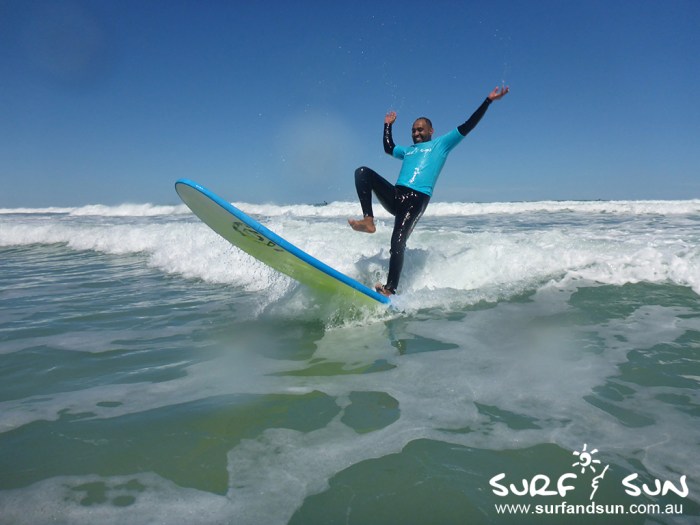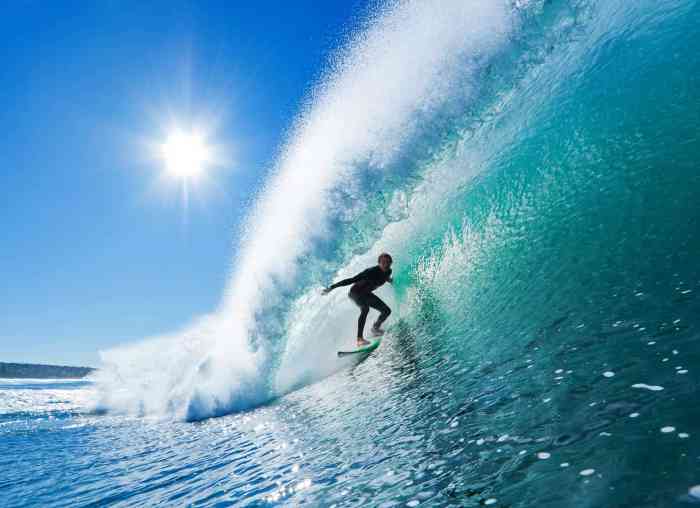Embark on a thrilling journey into the world of surfing with “How to Surf: 7 Steps to Learning to Surf.” This comprehensive guide will equip you with the essential knowledge and skills needed to conquer the waves like a pro.
From understanding the basics to mastering the art of riding the perfect wave, this guide covers everything you need to know to kickstart your surfing adventure.
Overview of Surfing

Surfing is a water sport that involves riding waves on a surfboard. It requires balance, skill, and a love for the ocean. The appeal of surfing lies in the thrill of catching a wave, the connection with nature, and the sense of freedom it provides.
History and Evolution of Surfing
Surfing has a rich history that dates back thousands of years. It originated in Polynesia, where it was an important part of the culture and was often used for spiritual rituals. In the early 20th century, surfing gained popularity in Hawaii and California, eventually spreading to other parts of the world.
Types of Waves Suitable for Surfing
There are different types of waves that surfers look for when choosing where to surf. Some waves are better suited for beginners, with gentle breaks and long rides, while others are more challenging, with powerful barrels and fast sections. Understanding the characteristics of each wave is essential for surfers to choose the right spot for their skill level.
Essential Equipment for Surfing

To fully enjoy the experience of surfing, it is crucial to have the right equipment. Here is a list of necessary gear for beginner surfers and tips on how to choose the appropriate surfboard and wetsuit.
Necessary Gear for Beginner Surfers
- Surfboard: The most essential piece of equipment for surfing. Choose a soft-top or foam board for beginners as they provide more stability and buoyancy.
- Leash: A leash attaches your ankle to the surfboard, preventing it from drifting away if you fall off.
- Wetsuit: Keeps you warm in cold water and provides protection from the sun, waves, and potential scrapes.
- Wax: Applied to the surface of the surfboard to provide traction and prevent slipping.
- Sunscreen: Protects your skin from harmful UV rays, especially important when spending long hours in the water.
Choosing the Right Surfboard
When selecting a surfboard, consider your skill level. Beginners should opt for longer and wider boards that offer more stability. As you progress, you can transition to smaller boards for better maneuverability in the waves.
Choosing the Appropriate Wetsuit
- Water Temperature: Select a wetsuit thickness based on the water temperature. Thicker suits are suitable for colder waters, while thinner suits work well in warmer conditions.
- Fit: Ensure the wetsuit fits snugly but allows for freedom of movement. A properly fitting wetsuit will keep you warm and comfortable while surfing.
- Material: Neoprene is the most common material used in wetsuits due to its insulation properties. Look for high-quality neoprene suits for better durability and warmth.
7 Steps to Learning to Surf

Learning how to surf can be an exciting and rewarding experience. Here are seven steps to help you get started on your surfing journey.
Step 1: Understanding the Surfing Environment
Before you even hit the waves, it’s essential to understand the surfing environment. Learn about tides, currents, and wave patterns to ensure your safety and improve your surfing skills.
Step 2: Getting Comfortable in the Water
Practice swimming and getting comfortable in the water. This step is crucial as you’ll spend a lot of time paddling and maneuvering in the ocean while surfing.
Step 3: Paddling Out
To catch a wave, you first need to paddle out beyond the break. Use proper paddling techniques to navigate through the waves and reach the lineup where you can catch waves.
Step 4: Catching a Wave
Position yourself correctly on your surfboard, spot a wave you want to catch, and paddle to match its speed. Once you feel the wave picking you up, pop up to your feet and ride the wave towards the shore.
Step 5: Stance and Balance
Maintain a proper stance on your surfboard by keeping your feet shoulder-width apart and your body centered over the board. Balance is key to staying on your board and maneuvering through the waves effectively.
Step 6: Turning and Maneuvering
Learn how to turn your surfboard by shifting your weight and using your body to steer. Practice different maneuvers to improve your surfing skills and control over the board.
Step 7: Common Mistakes and How to Avoid Them
Beginners often make mistakes like looking down instead of ahead, not paddling enough, or being too tense. Be mindful of these common errors and focus on improving your technique to progress in your surfing journey.
Closing Summary

As we wrap up our exploration of “How to Surf: 7 Steps to Learning to Surf,” remember that with dedication and practice, you’ll soon be gliding effortlessly on the waves, experiencing the sheer joy and thrill that surfing has to offer. Dive in, embrace the challenge, and let the waves be your guide to an unforgettable surfing journey.